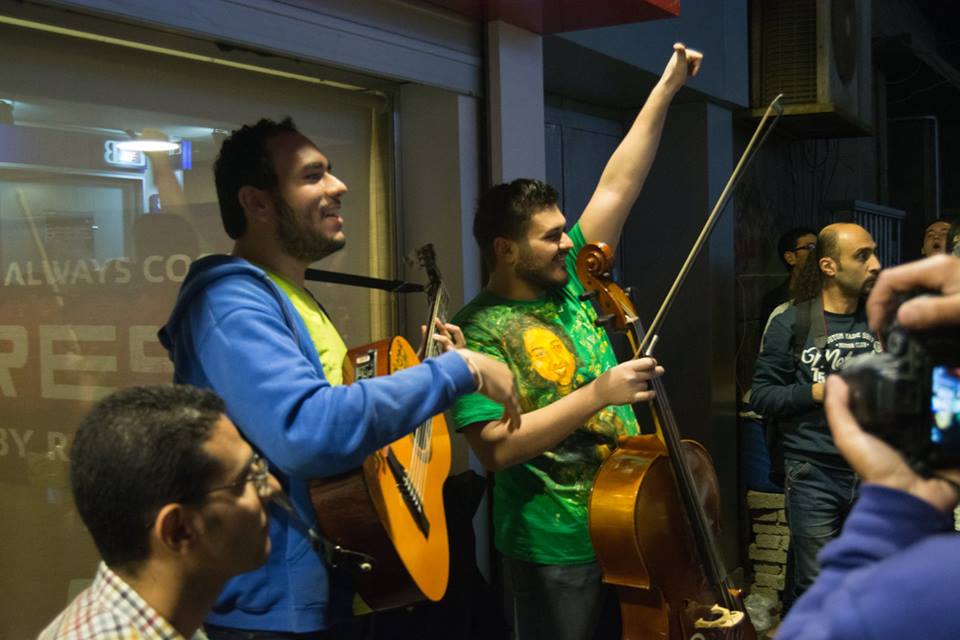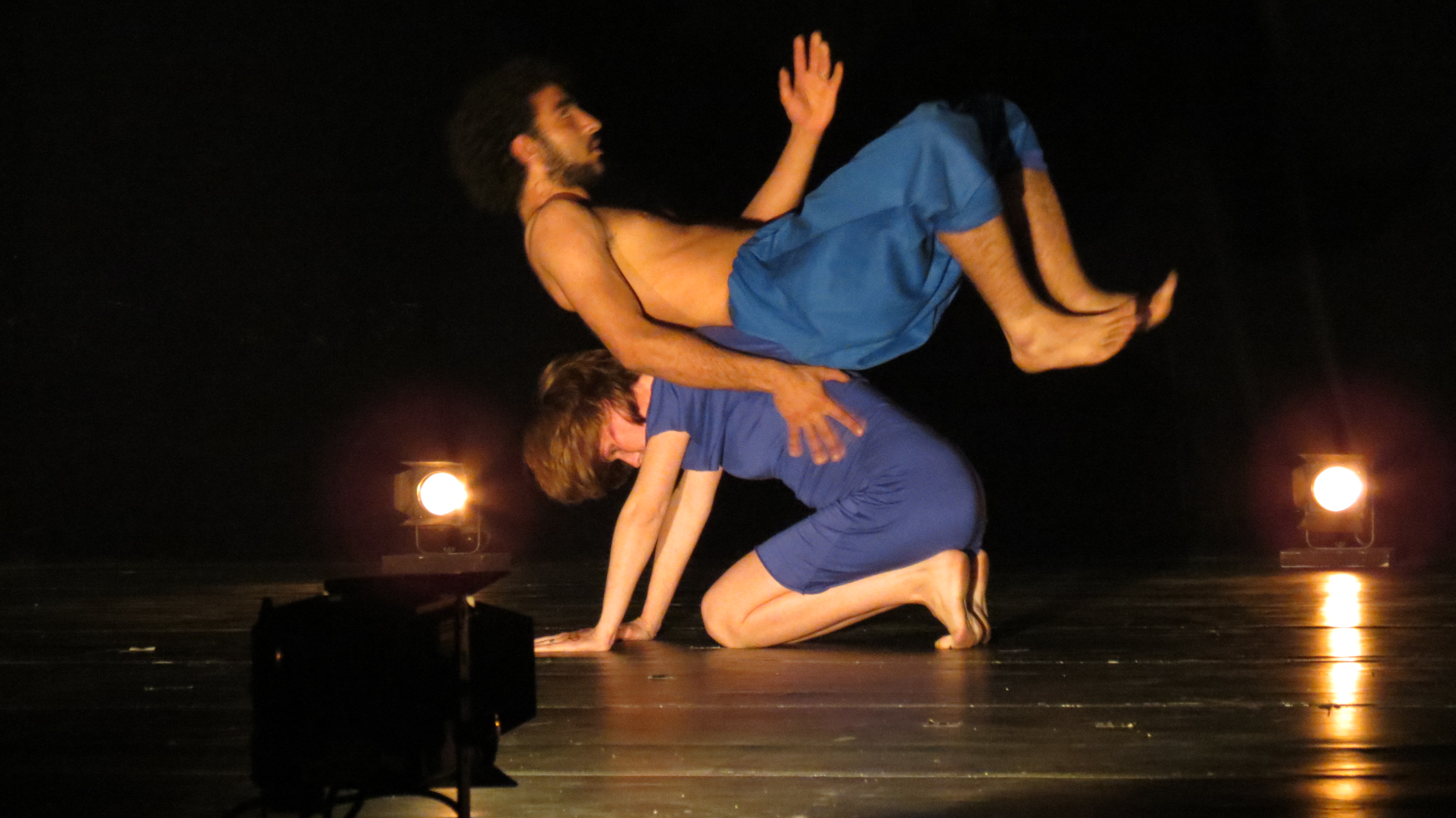They may be stuck in a round-the-clock news cycle, the subject of political debate and policy discourse, but they themselves are never truly seen or heard.
Syria’s protracted conflict has gone on for over four years. The names of cities and important figures in the war run across the front pages of newspapers daily, but the ordinary Syrian is all but forgotten in the cycle of refugees that have dispersed across the globe.

the details of his trip to Jordan
(DNE photo)
Egyptian photojournalist Ahmed Hayman used his camera to bring the world to the heart of one of the largest refugee camps to have grown out of the world: Jordan’s Al-Zaatari refugee camp. Through his photographs, Hayman depicts the faces and stories of thousands of Syrian refugees caught between their dreams and hopes for the future and the despair of the present.
“I have been planning and hoping to cover the refugee subject for a long time,” said Hayman. “Since most Syrian refugees are attempting to travel to European countries, I was not able to travel to them due to visa issues.”
After years and months of delays and refusals, Hayman managed to visit Al-Zaatari thanks to the help of the Arab Woman Organisation. The trip only lasted two days, but it was long enough for the photojournalist to be able to capture a snapshot of the day in and day out of these war-torn lives.
“Entering and exiting the camp requires permission from the Jordanian army. It is one of the most secured and organised refugee camps in the region. The shelter’s walls are decorated with gigantic portraits of the people living inside. The photos were captured by a few international photographers that visited the area earlier,” said Hayman.
After entering the camp, Hayman was faced with the raw reality of life within the decorated walls. After four years of isolation in the barren desert, the camp’s population has not only grown acquainted to the circumstances, they also operate as if the camp is an independent country. The 70,000 individual live in caravans that were donated by few Arab countries; nonetheless, every single family in the camp had to pay money for their caravan.
“The war did not differentiate between the rich and the poor. Now, everyone lives next to one another. One of the main problems they face within the shelter is the increasing number of cases of sexual harassment. Many girls have stopped going to school because they are afraid to walk the streets between their caravan and the UN’s facility. In addition, the marriage of underage children is an ongoing dilemma that the UN is trying to solve,” said Hayman.

encouraged them to practice photography and take images of him
(Photo by Ahmed Hayman)
Hayman’s visit did not only seek to document the raw reality at the camp, it aimed to give a genuine voice to those inside. During the past four years many journalists and photographers have visited the area. However, the majority of them have used the images for personal gain and fame, failing to assist the refugees.
Hayman wants his main goal and approach to capturing the lives in the refugee camp to be starkly different from his colleagues. The photojournalist has incorporated his photographs from the shelter into several photo exhibitions that aim to narrate the stories and dreams of Syrian refugees.
“The exhibition aims to be a visual experience that gives the visitor the feeling of actually meeting those in the pictures,” said Hayman.
Hayman’s visual gallery is called “The Dream is Still Alive”. The photographer picked 16 photographs that were backlit and showcased in a dark room, with quotes written under each portrait to help the audience get to know the person behind the face.
“When I asked them about their dreams, everyone gave me the same exact answer: to return home,” said Hayman.
Even though he is well-known for his portraits, one of the images that went completely viral was a selfie of him and a few kids. The photojournalist uploaded the picture onto a Facebook group, and it soon received more than 8,000 likes and shares.
“When I uploaded the photo, a Syrian citizen living in Turkey contacted me saying that the girls in the photo might be his relatives. He fled the country when the war began and lost all contact with his family. He said they are much older and look different, but he was sure that they were his family. He asked me to check their names so that he can be sure that they are safe,” said Hayman.
Because the photojournalist could not stay for more than two days he could not capture all the things that he wanted to photograph. Despite this, the images manage to expand on the smallest details of the lives of refugees living in the camp.
“I worked with the kids first because the grownups have already met many photographers and journalists that have interrupted their lives without helping them. The kids were keen on taking the pictures themselves. Many of the kids took some great photos of me. I dream that one day I will be able to go back and teach the kids how to be professional photographers, to help them achieve their dreams,” said Hayman.

an NGO in collaboration with few local artists from withing the camp.
A nine year old worked on most of the caravans,” said Hayman
(Photo by Ahmed Hayman)
Hayman concluded the exhibit with a child’s portrait to communicate that hope should remain in the hands of upcoming generations, including those children born outside the confines of the war that have never stepped on Syrian land.
The exhibit’s success has encouraged Hayman as well as the organisers, the International Women Organisation, to seek out other ways of helping refugees.
“At the moment, there are two proposed methods. Under the government’s supervision, financial donations will be raised for Al-Zaatari refugee camp. Meanwhile, the organisation has suggested printing postcards with images of the refugees in the camp so people can know their faces and communicate with them through letters,” said Hayman.
Hayman’s overarching goal is to bring the individuals that are pivoted to the front line of the news to the audience, not the political conflicts and not the brutal news about the war, but the people themselves.
“People are beginning to forget the cause. When thinking about Syria, they only receive images of blood and death. We have forgotten about the people caught in between everything, we forgot about their dreams of going back home,” said Hayman.



